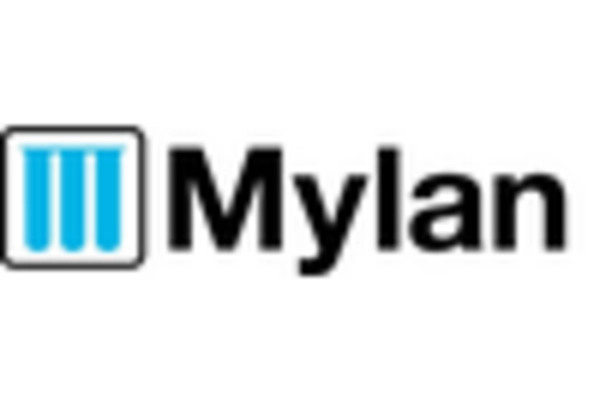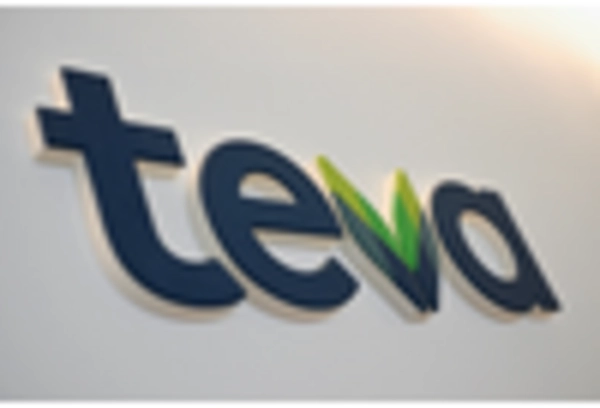Growing Geriatric Population
The increasing geriatric population is a significant factor driving the Lisinopril Market. Older adults are more prone to hypertension and related cardiovascular issues, necessitating effective management strategies. As the global population ages, the prevalence of hypertension among seniors is expected to rise, leading to a higher demand for medications like Lisinopril. Data indicates that by 2050, the number of people aged 60 years and older will double, reaching approximately 2 billion. This demographic shift presents a substantial opportunity for the Lisinopril Market, as healthcare systems adapt to meet the needs of an aging population. Moreover, the focus on preventive healthcare in older adults may further enhance the utilization of Lisinopril, as it plays a crucial role in managing blood pressure and reducing the risk of cardiovascular events.
Rising Healthcare Expenditure
The upward trend in healthcare expenditure is a crucial driver for the Lisinopril Market. As countries allocate more resources to healthcare, there is a corresponding increase in spending on medications, including antihypertensives like Lisinopril. This trend is particularly evident in regions where healthcare reforms are being implemented to improve access to essential medicines. Increased healthcare budgets allow for better patient management and treatment options, which may lead to higher prescription rates for Lisinopril. Moreover, as patients become more aware of their health and seek effective treatments, the demand for Lisinopril is likely to rise. The Lisinopril Market stands to gain from this growing investment in healthcare, as it aligns with the broader goal of improving cardiovascular health outcomes.
Increasing Prevalence of Hypertension
The rising incidence of hypertension is a primary driver for the Lisinopril Market. As more individuals are diagnosed with high blood pressure, the demand for effective antihypertensive medications like Lisinopril is likely to increase. According to recent data, nearly 1.13 billion people worldwide suffer from hypertension, which underscores the necessity for accessible treatment options. This growing patient population is expected to propel the Lisinopril Market forward, as healthcare providers increasingly prescribe this medication to manage hypertension effectively. Furthermore, the aging population, which is more susceptible to cardiovascular diseases, contributes to the heightened demand for Lisinopril. As awareness of hypertension and its complications continues to rise, the Lisinopril Market is poised for substantial growth.
Advancements in Pharmaceutical Research
Innovations in pharmaceutical research are significantly influencing the Lisinopril Market. Ongoing studies and clinical trials are exploring the efficacy of Lisinopril in various patient demographics, including those with comorbid conditions. This research is crucial as it may lead to new indications for Lisinopril, thereby expanding its market potential. Additionally, advancements in drug formulation and delivery methods could enhance patient compliance and therapeutic outcomes. The Lisinopril Market stands to benefit from these developments, as they may result in improved treatment protocols and increased prescriptions. Furthermore, the integration of technology in drug development processes is likely to streamline production and reduce costs, making Lisinopril more accessible to patients. As a result, the Lisinopril Market may experience a surge in demand driven by these research advancements.
Regulatory Support for Antihypertensive Medications
Regulatory bodies are increasingly supporting the use of antihypertensive medications, which positively impacts the Lisinopril Market. Policies aimed at improving access to essential medicines are being implemented, facilitating the availability of Lisinopril in various markets. Additionally, guidelines from health organizations often recommend Lisinopril as a first-line treatment for hypertension, further solidifying its position in the market. This regulatory backing not only enhances the credibility of Lisinopril but also encourages healthcare providers to prescribe it more frequently. As a result, the Lisinopril Market is likely to benefit from increased prescriptions and a broader acceptance of this medication within clinical practice. Furthermore, ongoing efforts to streamline the approval process for generic versions of Lisinopril may also contribute to market growth by making the drug more affordable.


















Leave a Comment